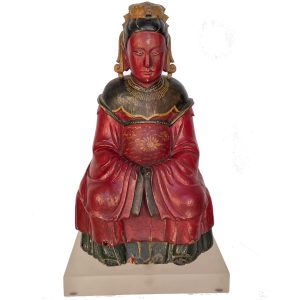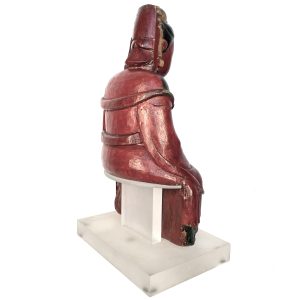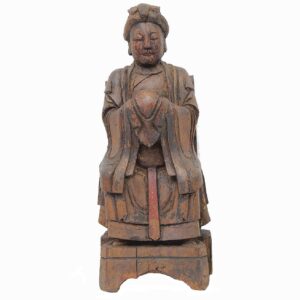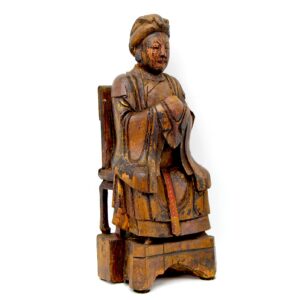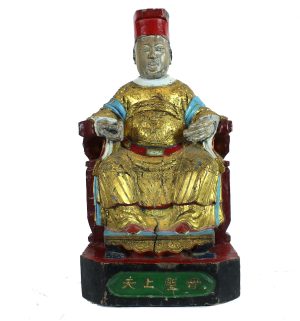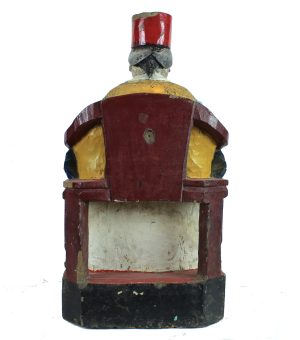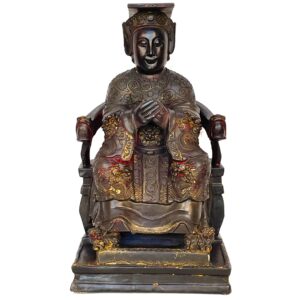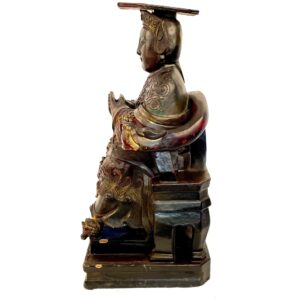-
Sale!


$275.00 Original price was: $275.00.$225.00Current price is: $225.00.
Finely carved from dense wood Mazu is the Heavenly Empress on a horseshoe chair, holding official’s girdle, phoenix hat with outstretched wings and cloud collar symbolizing her place in heaven.
-
Sale!


$1,750.00 Original price was: $1,750.00.$1,150.00Current price is: $1,150.00.
H: 21” W: 11.5” D: 8” | FOR SHIPPING call 213-568-3030 or email [email protected]
Temples for “Heavenly Empress” Mazu in southern China coastal regions protect sea faring peoples. This motherly home altar statue reflects that although childless, she protects her children – her devotees – as a mother. Seated on lucite base.
-
Sale!


$425.00 Original price was: $425.00.$225.00Current price is: $225.00.
H: 9” W: 6.525” D: 2.5 | FREE SHIPPING WITHIN CONTINENTAL U.S.
Small consecrated home altar provincial Mazu, finely carved on armless back chair dressed modestly in peasant robes with a phoenix in her hat, she is motherly figure who protects her devotees as her children.
-
Sale!


$1,150.00 Original price was: $1,150.00.$875.00Current price is: $875.00.
H: 19.25″ W: 10″ D: 8.75″ |CALL 213-568-3030 OR EMAIL [email protected] FOR SHIPPING.
Seated imperiously on a horseshoe chair with carved title “Holy Mother in Heaven,” Mazu is depicted in the imperial style, with a regal flat topped headdress, elaborate robes with dragons, official’s girdle in red and gilt.
-
Sale!


$1,050.00 Original price was: $1,050.00.$650.00Current price is: $650.00.
H: 15.375” W: 8.625” D: 7.5” | CONTACT US AT 213-568-3030 or email [email protected] for SHIPPING.
Mazu, protector of sea, is portrayed as the imperially sanctioned “Empress of Heaven” on an elaborate, horseshoe shaped dragon throne, holding a hu tablet, with elegant dragon robes, official’s girdle, Empress headdress and small feet on gilt fu lion foot rest.
End of content
End of content



